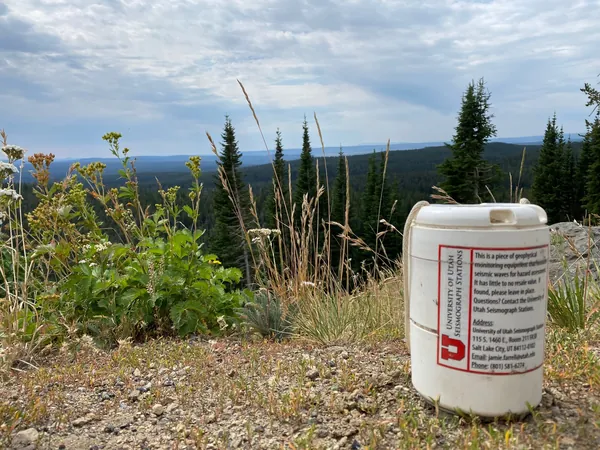
Unlocking Yellowstone: Scientists Use Vibrations to Explore the Magma Beneath
2025-04-16
Author: Siti
A Hidden World Beneath Yellowstone
Deep beneath the iconic landscapes of Yellowstone National Park lies a massive magma reservoir, teeming with superheated rock and volatile gases. Although scientists have long recognized its existence, pinpointing its precise location and characteristics, particularly near the surface, has remained elusive. However, a groundbreaking study by researchers from the University of Utah and the University of New Mexico has shed new light on this underground realm.
Seismic Imaging Breakthroughs
Employing an innovative technique involving hundreds of portable seismometers and a mechanical vibration source, the team has successfully created 2D seismic reflections of Yellowstone's subterranean landscape. Their findings, published in the journal Nature, reveal that the upper boundary of this magma chamber is located about 3.8 kilometers (approximately 12,500 feet) beneath the Earth's surface, sharply separating it from the rock above.
The Composition of Yellowstone's Magma
Co-author Jamie Farrell, a leading geophysicist, emphasizes the significance of this depth discovery. Understanding the pressure and gas dynamics associated with the magma is crucial, as trapped gases can lead to explosive eruptions when they decompress. Luckily, this research indicates that Yellowstone is currently not at risk for an imminent eruption.
Good News: Eruption Risks Mitigated
Much of the volatile gas from the magma escapes harmlessly through geothermal features like Mud Volcano, preventing dangerous build-ups, according to co-author Fan-Chi Lin. As magma rises, gases like CO2 and H2O typically accumulate at the chamber's top but can escape through channels to the surface, alleviating pressure.
The Massive Magma System
Yellowstone's magma chamber, primarily composed of a high-silica rock called rhyolite, spans an extensive area of 55 by 30 miles, reaching depths of 10 miles. Beneath it lies an even larger reservoir of lower-silica basalt, containing significantly less molten rock. The last catastrophic eruption occurred around 630,000 years ago, raising concerns about the volcano's potential to erupt again. However, this new data suggests that fears of an imminent explosion are unfounded.
Innovative Techniques Transforming Geological Research
To achieve a clearer picture of Yellowstone's magma, the research team utilized 650 portable geophones positioned at regular intervals throughout the park. Instead of depending on natural earthquakes, they employed a specialized Vibroseis truck to induce seismic activity and gather data. This approach allowed for high-resolution imagery of the magma's structure.
Decoding the Volcano's Secrets
The seismic waves produced travel at different speeds, revealing valuable information about the chamber's composition. The researchers concluded that 86% of the upper portion consists of solid rock, while the remaining 14% contains a mixture of molten material and volatile gases.
Implications for Volcanic Research Globally
This enhanced understanding of Yellowstone's magma system is not merely an academic exercise; it has implications for the study of volcanic activity worldwide. As U.S. Geological Survey’s Mike Poland notes, the insights gained from Yellowstone can be applied to other, more active volcanoes across the globe.
A Laboratory Volcano for the World
Yellowstone functions as a ‘laboratory volcano’ providing critical knowledge about volcanic activity. As research techniques evolve, so too does the potential to explore and understand our planet's dynamic geological forces like never before.

 Brasil (PT)
Brasil (PT)
 Canada (EN)
Canada (EN)
 Chile (ES)
Chile (ES)
 Česko (CS)
Česko (CS)
 대한민국 (KO)
대한민국 (KO)
 España (ES)
España (ES)
 France (FR)
France (FR)
 Hong Kong (EN)
Hong Kong (EN)
 Italia (IT)
Italia (IT)
 日本 (JA)
日本 (JA)
 Magyarország (HU)
Magyarország (HU)
 Norge (NO)
Norge (NO)
 Polska (PL)
Polska (PL)
 Schweiz (DE)
Schweiz (DE)
 Singapore (EN)
Singapore (EN)
 Sverige (SV)
Sverige (SV)
 Suomi (FI)
Suomi (FI)
 Türkiye (TR)
Türkiye (TR)
 الإمارات العربية المتحدة (AR)
الإمارات العربية المتحدة (AR)